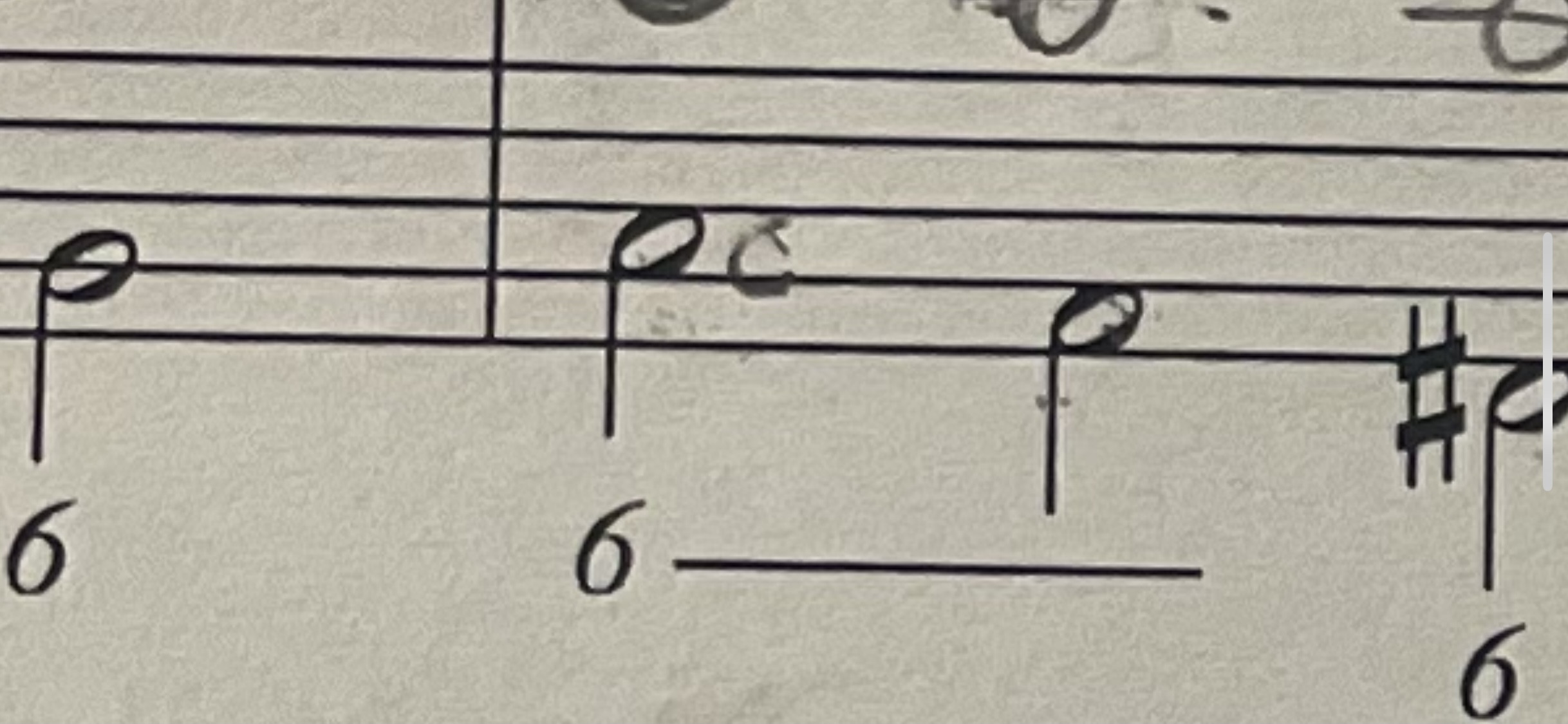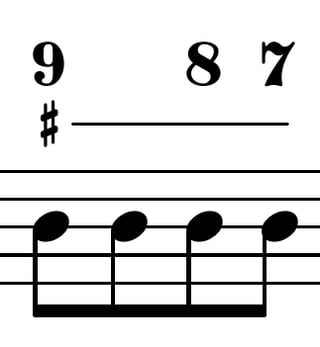I can't figure out what a "6——" means in figured bass. The bass notes are C and A.
-
9Please include an image with this notation (and some context, perhaps a bar before and after).– user1079505Commented Jan 22, 2022 at 16:48
-
1The figure 6 indicates a 6 chord: play a third and a sixth above the note that is marked with the figure 6. The horizontal lines mean that the chord doesn't change even though the bass notes are changing. However, there's no need to draw a horizontal lines over an A that follows a 6 chord over C, since with or without that horizontal line you would play a normal triad, the third and fifth above A. Without an image of the notation, therefore, the question is a bit confusing.– phoogCommented Jan 22, 2022 at 17:53
-
Is this an exercise from a music theory workbook or something similar?– phoogCommented Jan 24, 2022 at 8:33
3 Answers
This is a so called extender and specifies that the given chord note should be held for the given duration. As others have pointed out in this case this is rather useless, as the first chord would be a sixth chord on the c, so C-E-A, and this would tell to hold the A. But the next chord would be A-C-E anyway.
A more useful case would be something like this:
The extender specifies that the raised third should be held for all chords while we get suspension on the harmony.
Or in a case like this
it tells us that the 6 (a E) should remain and the 4 (C) should go into a minor 3 (Bb).
Or in a case like this
it tells us to keep in the 2-chord instead of switching to f-major.
Here is a more intricate example of this where you can see why this matters:
EDIT: For @user1079505 an example of a changing bass line:
or
or
But these things tend to only happend when either the bass has some ornamentation or when the bass switches to different notes of the same chord.
-
1None of these examples show a line over moving bass line. Commented Jan 23, 2022 at 6:38
-
1
-
1So if we have a line over a moving bassline, do we change upper notes at every bass note or not? Commented Jan 23, 2022 at 14:02
-
1@Dekkadeci Usually not. But this is a reason why using such an extender on a third->root situation can even be confusing.– LazyCommented Jan 23, 2022 at 14:11
The note that corresponds to 6 vertically determines the chord. That chord holds throughout that line in question. Hence it is all "A minor" (supposing that there are no flats-sharps). Firstly the 3rd (C) is in the bass, and then the root (A) is in the bass.
It means that you should play a sixth above the C (the written "6") and then continue to hold that note (the horizontal line) while the bass continues to A.
In other words, play an A and hold it through both bass notes.
-
Anyway you play A over A, so there's no need to write a line here. Either the figured bass is incorrect or the question isn't describing it clearly.– phoogCommented Jan 22, 2022 at 17:54
-
@phoog The line indicates the note should be held (i.e., a tie) and not rearticulated.– AaronCommented Jan 22, 2022 at 17:59
-
1That's not correct. Figured bass does not convey that degree of specificity.– phoogCommented Jan 22, 2022 at 18:09








